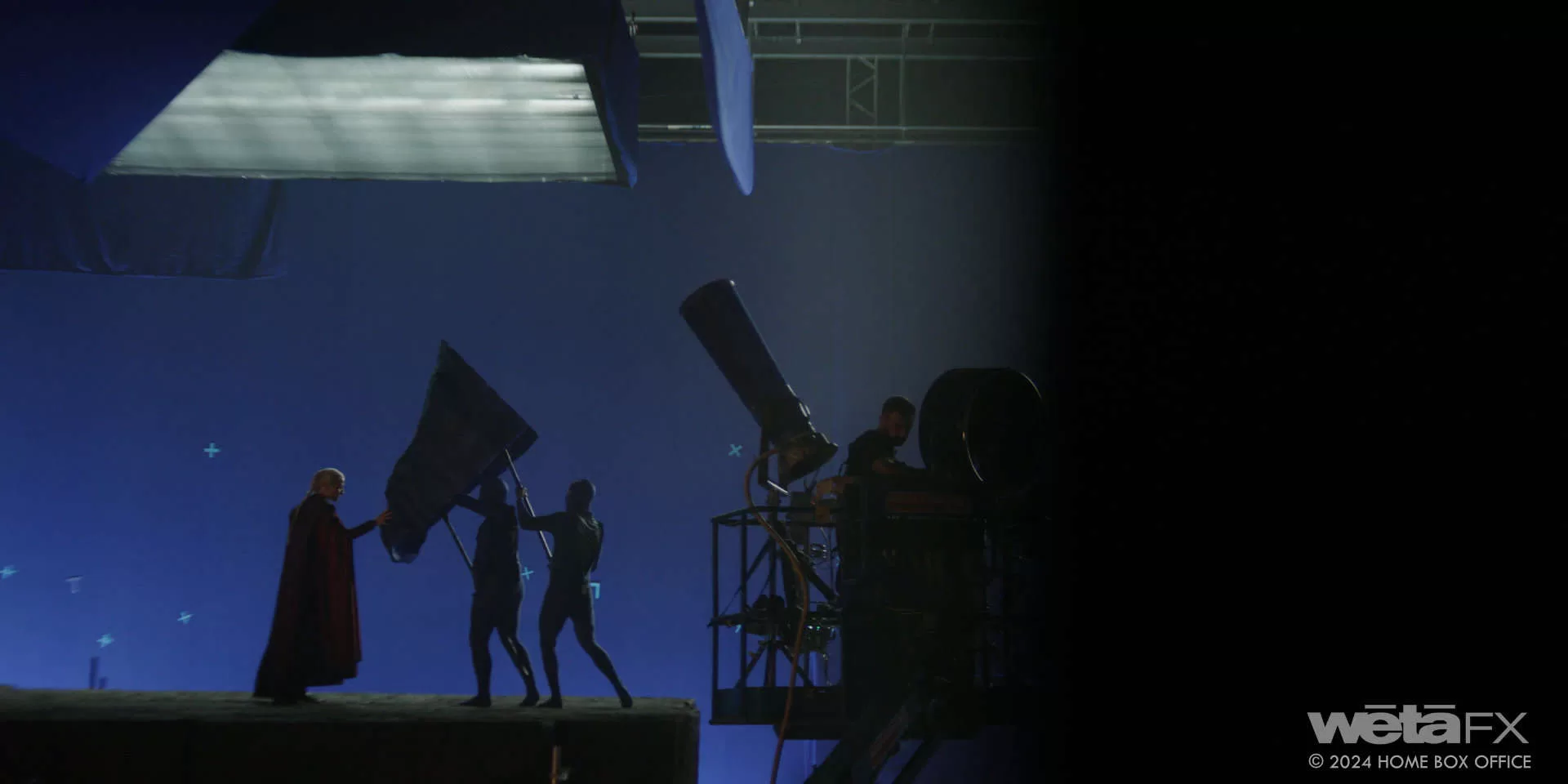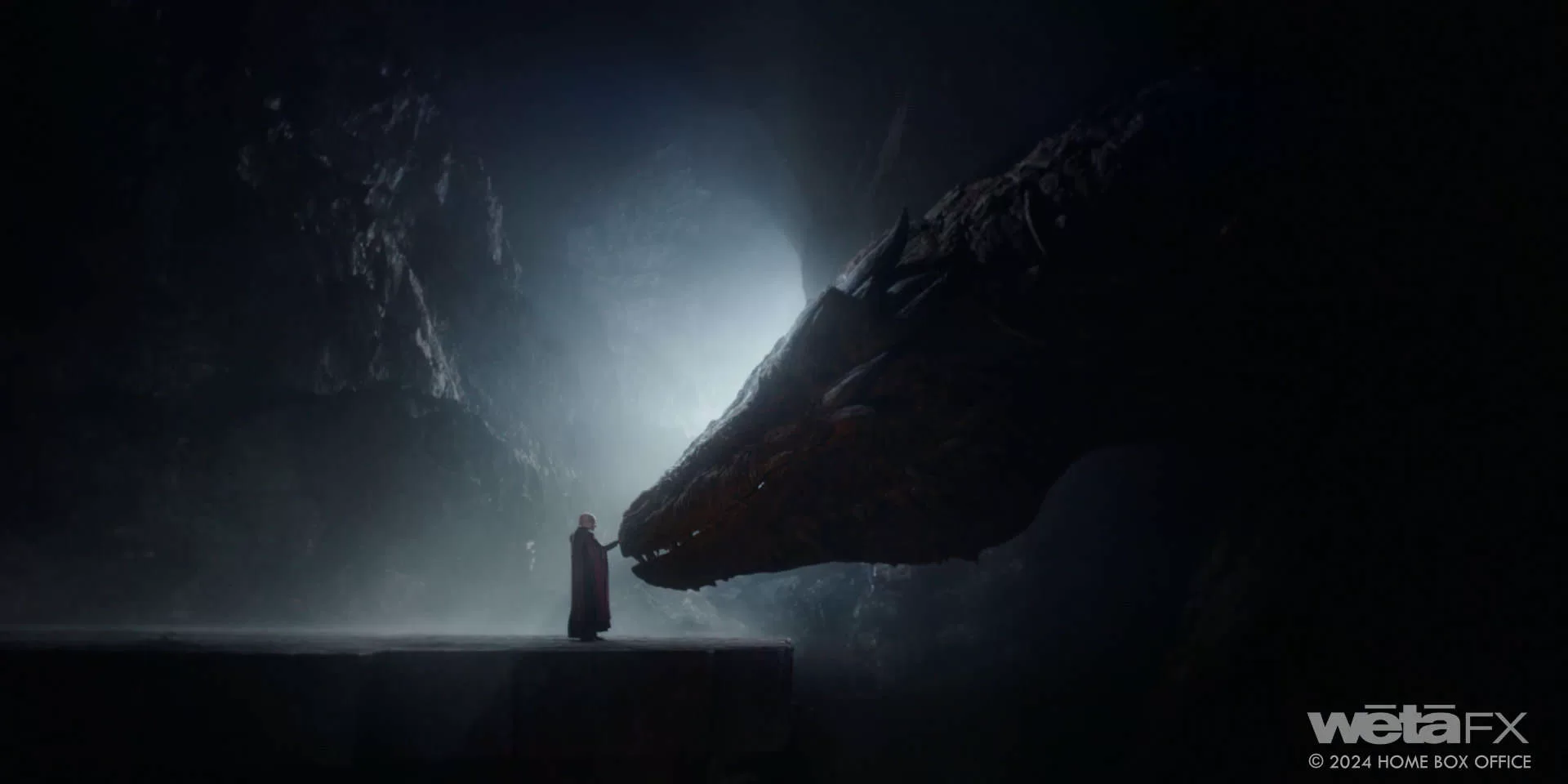For over three decades, Wayne Stables has been a driving force at Weta FX, contributing to some of the studio’s most iconic projects, from The Lord of the Rings trilogy to the Avatar saga and The Adventures of Tintin.
With a 24-year career in the visual effects industry, Jason Snyman has contributed to various shows at studios such as The Mill, Cinesite, MPC, and Weta FX. His expertise can be seen in films and series like Avatar, Game of Thrones, Zack Snyder’s Justice League, and Masters of the Air.
What is your background?
Wayne Stables // When I started in visual effects we had to do pretty much everything from modelling through to compositing. I think the only thing I never really did was character animation. Before that, I had a background in computer science and spent a childhood with far too many Legos.
Jason Snyman // I’m a bit of a generalist, I worked more in Models and Texturing back in the day.
What was your feeling to be back in Westeros?
Wayne Stables // Westeros is always a cool place to hang out so I was pleased to be back there.
Jason Snyman // Always good to be back playing with Dragons!
How was the collaboration with the showrunners, the directors and VFX Supervisor Dadi Einarsson?
Wayne Stables // It was a lot of fun. Getting to work together on the shots to come up with the best possible result to put on the screen is always rewarding.
Jason Snyman // We spoke the same animation lingo, he’s from an animation background and knows what he’s looking for which is great!
How did you organize the work with your VFX Producer?
Wayne Stables // I just get to say what’s important to me, and our great producer gets to do all the hard work figuring out the logistics.
What are the sequences made by Weta FX?
Wayne Stables // We did a lot of work across the season, but mostly focusing on the sequences with Caraxes, Vermithor, Seasmoke and Syrax. We also were heavily involved in building Harrenhal. Most of our work is in the last few episodes where people discover the perils of seeing if a dragon wants to be friends.
How did the visual effects team approach the design of the dragons in the new season of House of the Dragon to ensure they stood out from previous depictions in the Game of Thrones universe?
Wayne Stables // We received models and textures from the production with art department reference (the exception being Seasmoke where we had to do more from scratch) and then working with the production, we’d iterate to make any adjustments. Typically, that involved re-designing some parts both for the look of the dragon and to enable them to have the performances required for this season.
Can you walk us through the process of creating a new dragon from initial concept art to the final animated version on screen?
Wayne Stables // We start with a design and base model to make sure the shape and look of the dragon is correct. Then we will use reference and previous designs to develop the texturing and colour. We do a lot of modelling work on the face to ensure that we can hit the expressions that we want, and also spend time rigging the creature so that it can move and have things like secondary dynamics on the wings. We test the dragon under a lot of lighting setups to make sure that the look is what we want and finally put it into a shot to make sure it feels believable.
Jason Snyman // From an animation standpoint we looked at the structure of the creatures which were built based on bat and bird anatomy so we pulled reference from the real world and created a hybrid motion for what the dragon would move like based on that. We also looked at large lizards and dogs/cats for personality traits.


What were the biggest challenges in designing the various dragons to ensure each one had its own distinct personality and characteristics?
Wayne Stables // Generally, it’s ensuring that their colours and textures are different and then also a lot of it just comes down to giving them their own personality through their animation, especially their facial performances.
Jason Snyman // Animation-wise, getting the flight cycles to feel unique to the individual dragons. Copy and pasting Seasmoke to Syrax for example would just feel off. So each dragon needed to have their own feel.
How did you incorporate different inspirations, such as real-world animals or mythology, into the dragon designs?
Wayne Stables // While we do look for real life animals for help, a lot of these decisions had been worked out by the production so we follow their lead, and Dadi gave us strong direction both in design and motion.
The dragons in House of the Dragon have very different appearances. How did you achieve such diversity in their design while maintaining a cohesive visual style?
Once again the general style and design was worked out by the production. We are consistent with our treatment for things like translucency in the wings or how the eyes look. So, though they have a different design, they still all feel like the same species of living creature.
How much input did the showrunners and directors have in the design process of the dragons?
A huge amount. We very much just followed their direction and then made sure we executed it to make the dragons believable.
How did advancements in visual effects technology since Game of Thrones influence the way dragons were animated in this series?
Jason Snyman // Simulation technology has come a long way not only for the membranes and skin/muscles of the creatures, but how the dragons move. We can simulate the turbulent wind the dragons fly through that affects the motion, but this would be very time-consuming to get that level of detail in the motion without that technology.
Could you describe the collaboration between the visual effects team and the animators in bringing the dragons to life?
Jason Snyman // We usually have a previs or brief for what should be happening in a sequence/shot and we iterate on those ideas to get the feel for what the VFX team is looking for.
How did the scale and complexity of the dragon scenes in this season compare to those in Game of Thrones?
Jason Snyman // Animating dragons is always complex and each show has its different challenges. I think the complexity comes from building on lessons learnt from the previous seasons, always refining the process.
How did you handle the challenge of animating the dragons’ fire-breathing scenes and making them look both terrifying and realistic?
Wayne Stables // We have a sophisticated simulation engine for creating effects like fire that we have developed across many years.
Jason Snyman // If you think about the force and power of the fire breathing, first you start thinking to what could cause that amount of pressure. We add anticipation all over the dragon’s performance from expanding the chest, pressing down into the ground to anchor the beast. Flaring the nostrils, all this helps make the fire blasts feel realistic. If the jaw was to just open and fire come out, it just wouldn’t be the same.
In terms of rendering and post-production, what were the most demanding aspects of creating dragon sequences for this season?
Wayne Stables // The biggest challenge was the oner with Vermithor. Just handling a shot of that length comes with a bunch of logistical problems, especially when there is a complex interaction with a number of live action elements.
Jason Snyman // I don’t know about demanding but keeping the dragons’ motions feeling ‘lifelike’ and ‘real’ is always tricky. Move too fast or slow and things start to fall apart.
When filming scenes where actors are riding dragons, how do you ensure that the visual effects will seamlessly integrate with live-action performances?
Wayne Stables // Most of it comes down to how the element is filmed on stage. Great care is taken to get the buck doing the right thing so that the actors move correctly with it, and then we match our dragons to that.



How did the visual effects and production design teams collaborate to bring the imposing and ruined castle of Harrenhal to life on screen?
Wayne Stables // We had the designs of Harrenhal and previous seasons to refer to, and then we tuned it based on notes from the clients for this season.
What references or historical inspirations did you draw upon when designing the look and atmosphere of Harrenhal and its eerie surroundings?
Wayne Stables // We looked at photographs of a lot of castles just to see how stone aged and weathered, and we had the photography of the beautiful Welsh countryside where the live action was filmed to draw upon.
What were the biggest challenges in creating the environment around Harrenhal, particularly in making it feel both grand and hauntingly desolate?
Really just aging it into the landscape, and also providing that landscape with a mixture of remote, wild terrain and man-made elements such as roads.
Were there any memorable moments or scenes from the series that you found particularly rewarding or challenging to work on from a visual effects standpoint?
Wayne Stables // I think bringing any creatures to life is always difficult but when they become a living breathing being it is incredibly rewarding.
Jason Snyman // The three minute ‘oner’ shot when Vermithor meets Hugh. Seeing all the elements come together for that was great!
Looking back on the project, what aspects of the visual effects are you most proud of?
Wayne Stables // Just that we delivered work that enabled the showrunner to tell the story that he wanted to, and that we gave our 110% to make the work the best that we could.
Jason Snyman // I’d say pushing the flight mechanics to a more realistic range than what I’ve done before.
Which sequence or shot was the most challenging?
Wayne Stables // Technically the big Vermithor shot was probably the most challenging. It’s so long and so complicated to put together into one seamless event.
Is there something specific that gives you some really short nights?
Wayne Stables // At times everything, but it always works out.
Jason Snyman // Too much coffee?
What is your favorite shot or sequence?
Wayne Stables // I really like when Daemon is sitting on Caraxes outside in the stunning landscape with the beautiful light wrapping around them. Dragons really do belong in Wales. There’s a reason why there’s one on their flag.
Jason Snyman // It’s when Seasmoke is chasing down Aadam, it was really fun to work on.
What is your best memory on this show?
Wayne Stables // I always enjoy seeing the amount of fun friends and family have watching the final product when it’s broadcast.
Jason Snyman // Reading the comments after a trailer / episode drops where the audience is trying to piece together what’s happening.
What are the four movies that gave you the passion for cinema?
Wayne Stables //
(and so many others like Jaws, The Godfather, The Shawshank Redemption etc.)
Jason Snyman //
A big thanks for your time.
WANT TO KNOW MORE?
Weta FX: Dedicated page about House of the Dragon: Season 2 on Weta FX website.
© Vincent Frei – The Art of VFX – 2024




